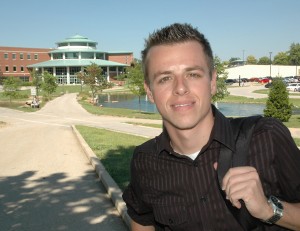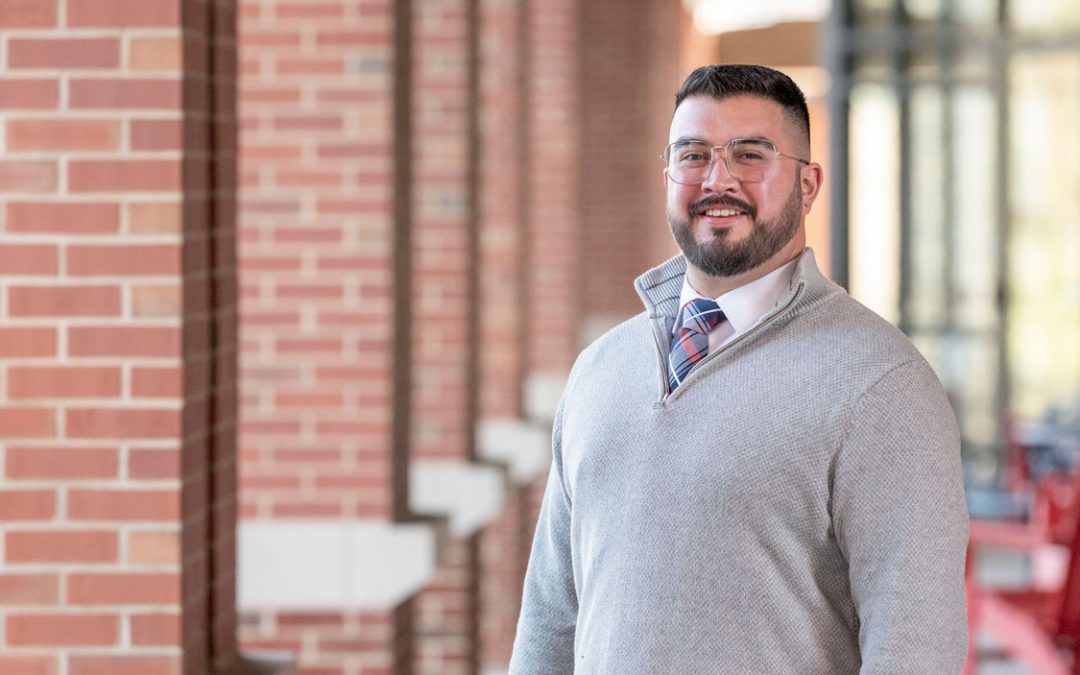Joe Moleski was born with hemophilia. At six months old, bleeding on his brain almost killed him. Before his first birthday, he had two full-body blood transfusions. Now, the vibrant 22-year-old University of Missouri–St. Louis biology senior is applying to medical schools – 30 to be exact – so that he can help children with his same condition.
“I know I can relate to patients in a way that all the training in the world could not teach,” Moleski, an Oakville, Mo., resident said. “That has always been my one disconnect with my doctors (that they didn’t truly understand what it was like to have hemophilia).”
Hemophilia is a condition that prohibits blood from clotting and thus causes excessive bleeding both internally and externally. It is usually inherited and occurs in one out every 50,000 males. A small percentage of women have it.
Moleski is looking for a medical school that fits him, like he says UMSL does.
“I want to find a place that wants the students to succeed,” he said. “I don’t want to just be a number. I think I’ve had the best education here at UMSL.”
His top three picks are the Edward Via Virginia College of Osteopathic Medicine in Blacksburg, Va., Lincoln Memorial University in Harrogate, Tenn., and Oklahoma State University in Stillwater, Okla.
Moleski worked all summer at the same opthalmologist’s office he’s worked at since high school to pay the $4,000 in application fees for medical school. The schools generally start contacting potential students for interviews in late August and September. Although he has yet to hear from any, Moleski said he is taking the process in stride.
“I’m trying to view life as a learning experience,” he said. “I want to go to medical school, but who knows what God has in store for me. Maybe I will apply to graduate school here at UMSL and go to medical school after that. I’m taking it all in and seeing where it takes me.”
In the meantime, he is finishing his last semester at UMSL and planning a trip to California to see how the main drug that keeps his hemophilia in check is made.
“It’s a big deal to get to do this,” said Moleski, who is going with 16 of his friends who also have hemophilia. “It takes two months just to get cleared and then you have to go through all these steps for sterilization.”
It takes one year to make a vial of his medication that he takes daily.
In addition to his academic pursuits, Moleski found time to be a camp counselor at Camp Notaclotamongus in Imperial, Mo., for the fourth consecutive summer. It’s sponsored by the Gateway Hemophilia Association in St. Louis. It’s a week-long camp that focuses on education, gaining independence and having fun.
For now, he’s waiting for call backs.
“Medical school is going to happen – if not this year, then next.”















